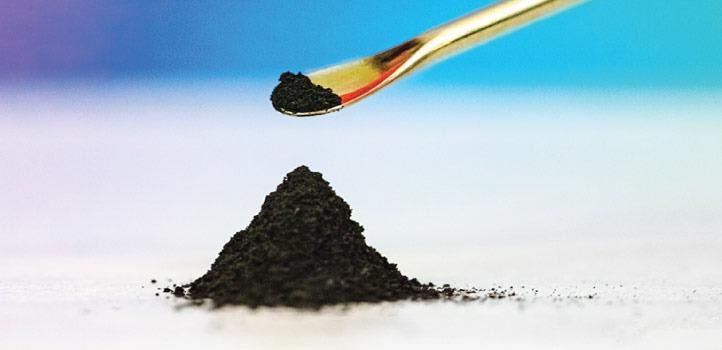Mar 2 2021
Carbon dioxide (CO2) in the atmosphere is a major factor that drives global warming. However, this gas could also be a useful resource. At KAUST, researchers have created an efficient catalyst that converts hydrogen and CO2 into methane (CH4) by using light energy.
 The catalyst nanoparticles developed by KAUST scientists use light energy to convert carbon dioxide and hydrogen into methane. Image Credit: © 2021 KAUST; Anastasia Serin.
The catalyst nanoparticles developed by KAUST scientists use light energy to convert carbon dioxide and hydrogen into methane. Image Credit: © 2021 KAUST; Anastasia Serin.
This counterbalances the release of CO2 while burning methane as a fuel. Several researchers across the globe have been seeking new methods to transform CO2 into useful carbon-based chemicals. However, their efforts have been restricted by low efficiencies that limit the prospects for large-scale application.
Our approach is based on the synergistic combination of light and heat, known as the photothermal effect.
Diego Mateo, Postdoc, KAUST
Mateo explained that the heat is produced by the interaction of light with the catalyst, so both forms of energy emerge from absorbed light.
Certain other industrial strategies necessitate heating from external sources to achieve temperatures as high as 500°C.
The KAUST study shows that the reaction can be realized using only the photothermal effect of daylight.
The catalyst is developed from nickel nanoparticles on a layer of barium titanate. It traps the light such that electrons are kicked into high-energy states, called 'hot electrons.'
The electrons subsequently activate the chemical reaction that sends CO2 back into methane. Under ideal conditions, the catalyst produces methane with almost 100% selectivity and with remarkable efficiency.
The main benefit here is the extensive range of the spectrum of light captured, which includes all visible wavelengths, apart from the ultraviolet rays to which several catalysts are restricted. This is much more crucial since ultraviolet light includes only 4% to 5% of the energy available in sunlight.
We strongly believe that our strategy, in combination with other existing CO2 capture techniques, could be a sustainable way to convert this harmful greenhouse gas into valuable fuel.
Diego Mateo, Postdoc, KAUST
Although any kind of fuel developed from CO2 would still discharge that gas upon being burnt, the CO2 could be recycled continuously from the atmosphere to fuel and backward again, instead of being released continually by fossil fuel burning.
The team has been making efforts to extend the applications of their method.
One strategy for our future research is to move towards producing other valuable chemicals, such as methanol.
Jorge Gascon, Research Team Leader, KAUST
The team also looks at the potential for making use of light energy to drive the synthesis of chemicals that do not include carbon, like ammonia (NH3).
Hot electrons send CO2 back to the future
Researchers at KAUST have developed an efficient catalyst that uses light energy to convert carbon dioxide and hydrogen into methane, which counteracts the release of carbon dioxide when methane is burned as a fuel. Image Credit: © 2021 KAUST; Anastasia Serin.
Journal Reference:
Mateo, D., et al. (2020) Efficient Visible‐Light Driven Photothermal Conversion of CO2 to Methane by Nickel Nanoparticles Supported on Barium Titanate. Advanced Functional Materials. doi.org/10.1002/adfm.202008244.